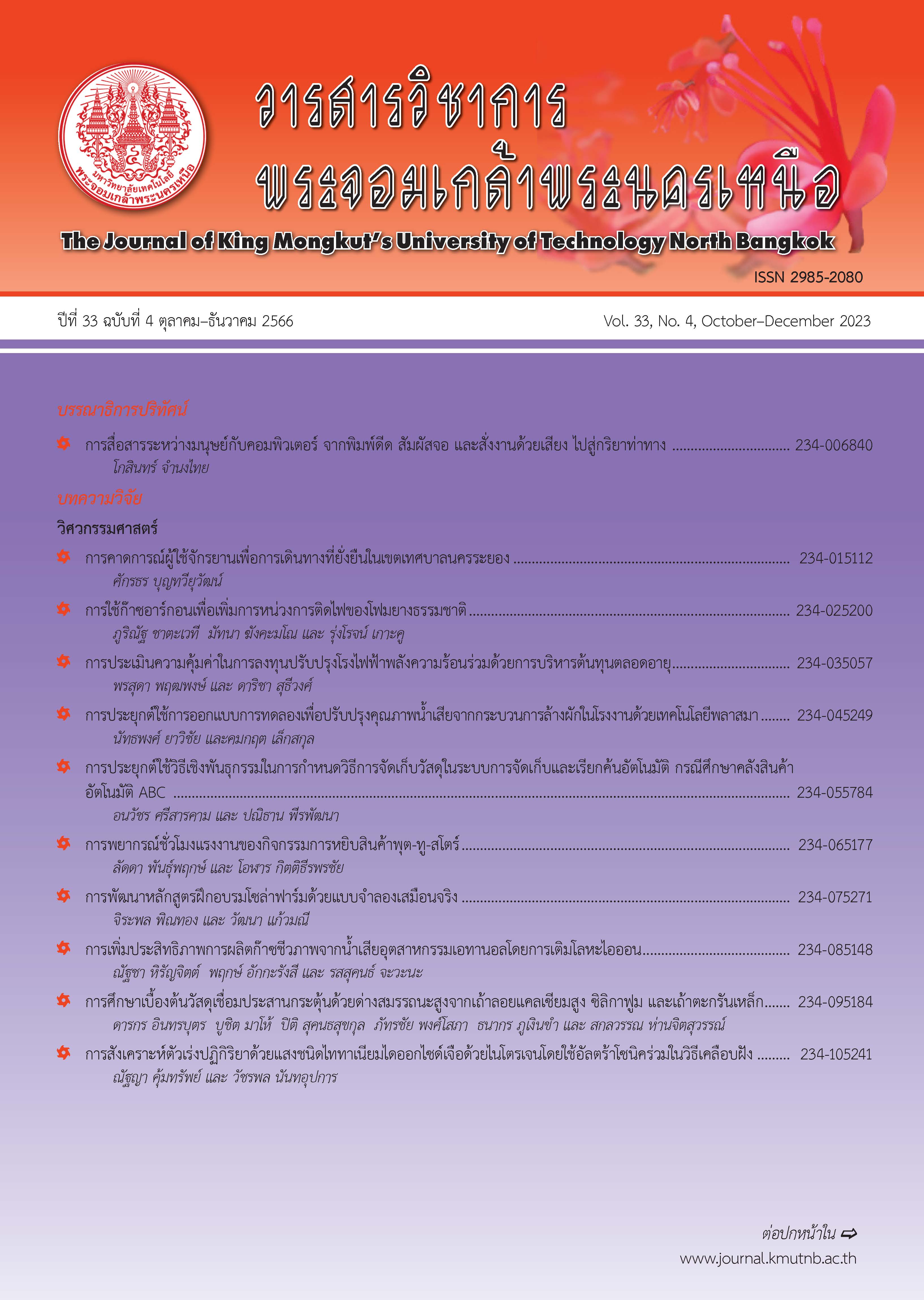Morphological Image Processing-based Method for Extracting Dimension Specification in Engineering Drawing
Main Article Content
Abstract
Engineering drawing for manufacture consists of orthographic projection and 3D image. Although 3D image drawing can be used to describe the object appearance, it cannot really show all dimensions and details. Therefore, details and dimensions are usually specified in a 2D image or orthographic drawing. Importantly, an expert or a skilled person is essentially required to read and understand an engineering drawing in order to reduce the time and cost spent to validate its details for manufacturing. Focusing on the above area, the morphological image processing-based method for extracting dimensions in engineering drawing is proposed. The approach can analyze, extract, and categorize the dimension details in 2D engineering drawing, i.e., object, dimensions, arrows, and text. The proposed approach has been tested with several drawings (166 dimension lines in total). It achieved over 81 percent accuracy in detecting the complete dimensions. Interestingly, this can further lead to the development of the application for error and repetition dimension detection.
Article Details

This work is licensed under a Creative Commons Attribution-NonCommercial-NoDerivatives 4.0 International License.
The articles published are the opinion of the author only. The author is responsible for any legal consequences. That may arise from that article.
References
R. Furferi, L. Governi, M. Palai, and Y. Volpe, “From 2D orthographic views to 3D Pseudo-wireframe: An automatic procedure,” International Journal of Computer Applications IJCA, vol. 5, no. 6, pp. 12–17, 2010.
P. Tiawongsombat and I. Chantaksinopas, “Low-level image feature in orthographic projection snapshot to 3D coordinate retrieval,” presented at the 5th International Conference on Information Technology (InCIT2020), Chonburi, Thailand, Oct. 21–22, 2020 (in Thai).
D. Dori and L. Wenyin, “Automated CAD conversion with the machine drawing understanding system: Concepts algorithms and performance,” IEEE transactions on systems man and cybernetics Part A, vol. 29, no. 4, pp. 411–416, 1999.
H. H. Gorgani and A. J. Pak, “A genetic algorithm based optimization method in 3D solid reconstruction from 2D Multi-view engineering drawings,” Computational Applied Mechanics, vol. 49, mo. 1, pp. 10, 2018.
S. Olkun. (2003, April). Making connections: Improving spatial abilities with engineering drawing activities. International Journal of Mathematics Teaching and Learning. [Online]. Available https://www.researchgate.net/ publication/27569528_Making_Connections_ Improving_Spatial_Abilities_with_Engineering_ Drawing_Activities
A. M. Intwala, K. Kharade, R. Chaugule, and A. Magikar, “Dimensional arrow detection from CAD drawings,” Indian Journal of Science and Technology, vol. 9, no. 21, pp. 1–7, 2016.
F. Su, J. Song, C.-L. Tai, and S. Cai, “Dimension recognition and geometry reconstruction in vectorization of engineering drawings,” in Proceedings of International Conference on Computer Vision and Pattern Recognition, Hawaii, 2001, pp. 710–716.
L. Wendling and S. Tabbone, “A new way to detect arrows in line drawings,” IEEE Trans. Pattern Analysis and Machine Intelligence, vol. 26, no. 7, pp. 935–941, 2004.
T. C. Henderson and L. Swaminathan, “NDAS: The nondeterministic agent system for engineering drawing analysis,” in Proceedings Intl Conference on Integration of Knowledge Intensive Multi-Agent Systems, Boston, 2003, pp. 512–516.
L. Swaminathan. “Agent-based engineering drawing analysis,” M.S. thesis, Department of Computer Science, University of Utah, Salt Lake City, Utah, 2002.
A. Habed and B. Boufama, “Dimension sets detection in technical drawings,” in Proceedings of Vision Interface, Trios-Rivieres, CA, 1999, pp. 217–223.
S. Tiwari, S. Mishra, P. Bhatia, and P. K. Yadav, “Optical character recognition using MATLAB,” International Journal of Advanced Research in Electronics and Communication Engineering (IJARECE), vol. 2, no. 5, pp. 579–582, 2013.
F. Borisyuk, A. Gordo, and V. Sivakumar. “Rosetta: Large scale system for text detection and recognition in images,” in Proceedings of the 24th ACM SIGKDD International Conference on Knowledge Discovery & Data Mining, 2018, pp. 71–79.
R. M. Haralick and L. G. Shapiro, Computer and Robot Vision. Boston, MA: Addison-Wesley, 1992, pp. 28–48.
N. Mohanan, A. Ahmad, S. S. Al-Busaidi, L. K. A. Abdulghani, and M. A. Nadabi “Use of mathematical morphology in vehicle plate detection,” Oriental Journal of Computer Science and Technology, vol. 11, no. 4, pp. 195–200, 2018.

